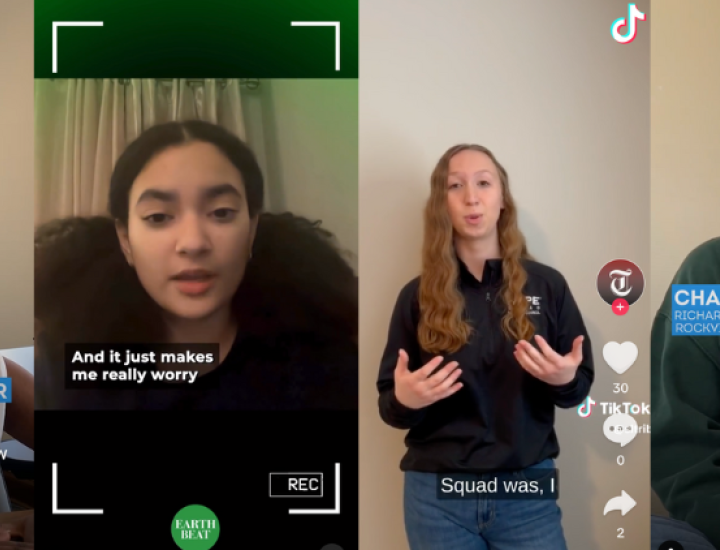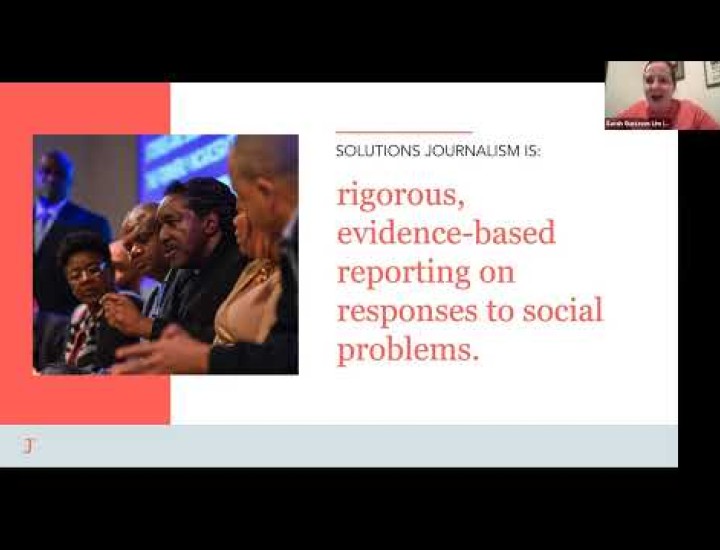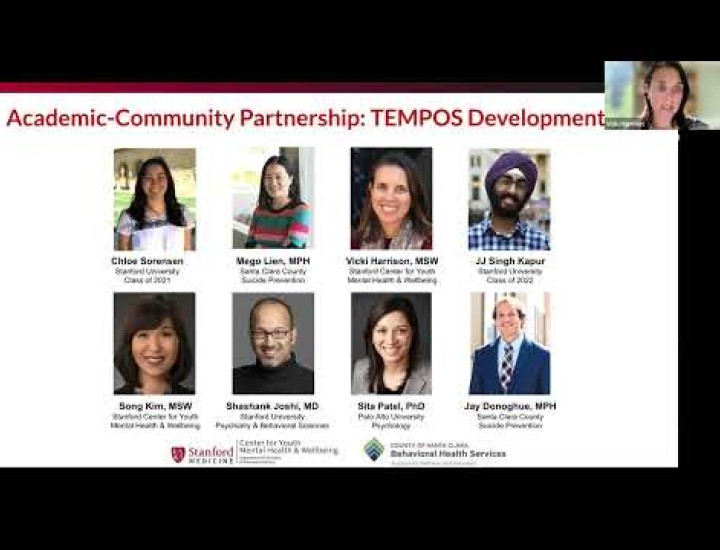Youth Mental Health
Journalists are producing community-informed, solutions-focused reporting about what's working to support youth mental health.
The Solutions Journalism Network (SJN) is supporting a range of initiatives and newsrooms to advance coverage of youth mental health topics, aiming to center both the lived experiences of young people and evidence-based responses that support their well-being.
Pictured: International student journalists Anna Pratts (left) and Gabrielle Caumon hold flags at St. Edward's. They are reporting on the unique mental health factors international students are facing in 2025 as part of the Student Media Challenge. Photo by Daniel Brannon for Hilltop Views
Student newsrooms are collaborating to cover student mental health through a solutions lens. This video highlights Student Media Challenge projects by Pepperdine University, Fresno State University and Dimelo, the student-staffed bilingual news service at the University of Southern California.
Solutions journalism is transforming communities — and the media industry











